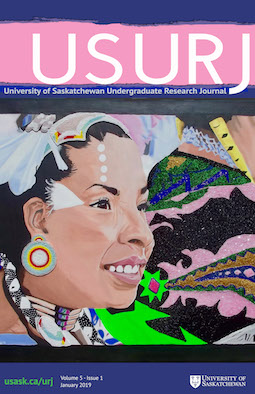The Relationship Between Epilepsy and Cannabis
DOI:
https://doi.org/10.32396/usurj.v5i1.340Keywords:
Marijuana, Epilepsy, Seizures, Cannabidiol, cannabisAbstract
Epilepsy is a disorder in which several recurrent seizures occur, and despite the fact that there are over twenty anti-seizure drugs available, more than 30% of people with epilepsy continue to have seizures (Friedman & Devinsky, 2015; Kolb & Whishaw, 2009). Many researchers have turned to marijuana, specifically the constituent cannabidiol (CBD), as they search for new solutions to effectively help this treatment-resistant form of epilepsy. The purpose of this paper is to provide an assessment between the relationship of marijuana and epilepsy. I will review a total of six studies, including one case study, and one meta-analysis. A considerable amount of controversy surrounds this topic, as marijuana is illegal in many parts of the world, and many researchers are undecided as to whether its legalization will be beneficial or not. In spite of this disagreement, most researchers believe that marijuana, specifically CBD, has shown some evidence in regard to the positive health benefits and reduction of seizures in epilepsy. Future analysis requires high quality and reliable studies which can continue to further our understanding of the relationship between marijuana and epilepsy.
Downloads
Published
Issue
Section
License
Articles: USURJ’s current Publication Agreements apply a Creative Commons Attribution-NonCommercial License (CC-BY-NC) by default. The CC BY-NC license lets others remix, tweak, and build upon work non-commercially. The author(s) can choose a different CC license, as outlined in https://creativecommons.org/about/cclicenses/. Please see the PDF for each article to determine what license is applied to that article. Author(s) can also request to reserve all copyright (All Rights Reserved). If there is no indication for articles published before September 2020, assume the author retains all rights beyond those necessary for publication by USURJ. All articles published after September 2020 will apply one of the aforementioned CC licenses. See the Publication Agreement under the Submission Preparation Checklist or Author Guidelines for more information. Artwork: All copyright for the original artwork remains with the artist unless they wish to apply a Creative Commons (CC) license to the artwork. Please see the PDF for each artwork to determine what license is applied to that artwork.







